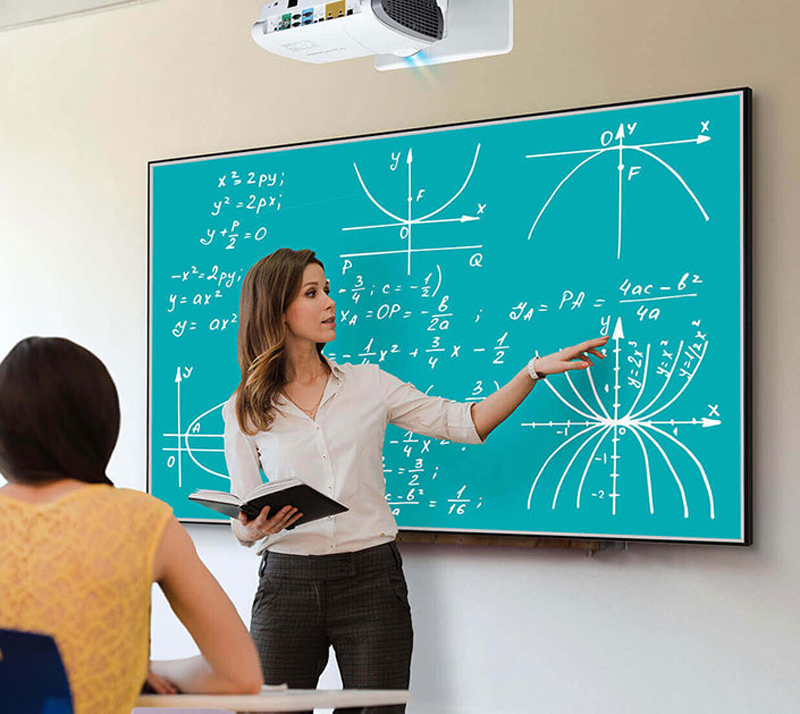Buying guide of projector for business
For purchasing a projector for business, you should be aware about the room size, if it is for a huddle room, Boardroom/ meeting room or a large scale conference room. What will be the source of input HDMI , VGA , LAN, USB cables. This projector buying guide will definitely help you to understand your projector and screen options and find the right projector for your business and commercial use
How to select the Projector Screen Size
The perfect projector screen size depends on the projector itself. So, before you start looking at how to regulate projector screen size, you need to check the aspect ratio of your projector. The distance at which you place the projector from the screen determines the approximate size of the image. The image size increases the farther the projector is from the screen, but can vary depending on the zoom factor, aspect ratio, and other settings.
- 4:3 Video in the Boardroom or Classroom: Because most laptops, televisions & projectors were built with an aspect ratio of 4:3 until the late 2000s, when widescreen projectors & TVs with 16:9 displays became the standard.
- HDTV (16:9) and Widescreen (16:10): You should’ve a slightly larger screen for these applications. The screen height should equal roughly one-third the distance from the screen to the best seat in the house — that’s based on your viewing preferences.
Calculating Projector Screen Dimensions for 16:9 Projectors
Here are your basic formulas for calculating projector screen dimensions. They are slightly rounded for your convenience.
All calculations are based on the screen area, and do not include the borders or frame. These calculations are for standard 16:9 aspect ratio screens (HDTV shape), which are used by the vast majority of home theater users, as the vast majority of home theater projectors are 16:9 native aspect ratio. Simply put, a 16:9 projection screen is 1.78 times as wide as it is high. 16 / 9 = 1.78 (rounded) If you know your projector screen’s diagonal size:
Projector Screen Height: To calculate the projector screen height, multiply the diagonal by approximately 0.495. (In other words the height of the screen is just a bit less than 50% of the diagonal.
Projector Screen Width: The width of the projector screen is approximately 87% of the projector screen’s diagonal, so multiply the diagonal measurement by approximately 0.87.


In most of the meeting rooms the lights are on. We recommend buying 3500 to 4000ANSI Lumens projector for small-to-medium rooms (such as a huddle room) accommodating around 10 people (such as a huddle room). For boardrooms or larger conference rooms accommodating 20-40 people, a projector with a brightness of 4000 to 5000 ANSI Lumens is recommended, especially when the lights are on. For seminar rooms, mini auditoriums and training rooms, accommodating 60-100 people the projector with 5000 – 8000 ANSI Lumens or higher.
To getting the sharper graphics required higher resolution, especially a projector for business which can be important when projecting detailed charts, text or high-definition videos.
Display resolution, number of pixels shown on a screen, expressed in the number of pixels across by the number of pixels high. For example, a 4K organic light-emitting diode (OLED) television’s display might measure 3,840 × 2,160. This indicates that the screen is 3,840 pixels wide and 2,160 pixels high and thus 8,294,400 total pixels in total.
High Definition (HD) | 1,280 × 720 |
Full HD (FHD) | 1,920 × 1,080 |
2K, Quad HD (QHD) | 2,560 × 1,440 |
4K, Ultra HD (UHD) | 3,840 × 2,160 |
8K, Ultra HD (UHD) | 7,680 × 4,320 |


